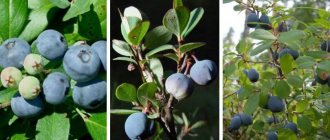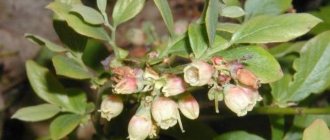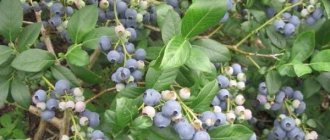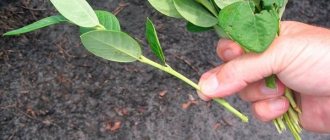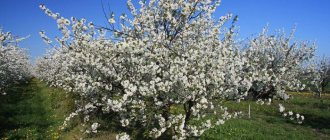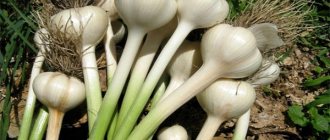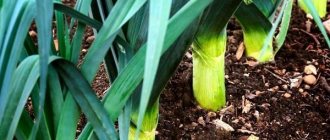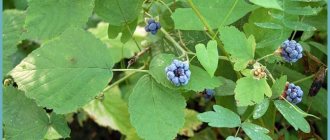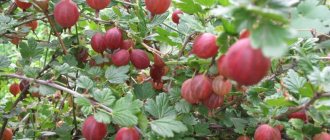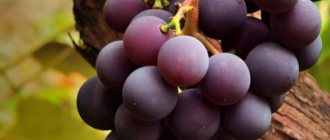How to distinguish garden and wild blueberries?
Garden and wild blueberries have a number of distinctive characteristics. Including:
- wild berries grow in swampy areas, and the cultivated form needs soil with high acidity;
- wild blueberry fruits are small and oval, and domestic berries are large-fruited, with fleshy pulp;
- garden berry bushes reach 2.5 m, and wild ones spread along the surface of the ground.
Description of late blueberries
Blueberry Bluegold
Late blueberries are called garden blueberries, varieties of which ripen in early or mid-autumn. Gardeners call the best varieties of late blueberries:
- Nelson provides its owner with fruits starting from the age of four. The bushes of the variety begin to bloom quite late, so the harvest can be harvested at the end of September. The fruits are medium in size, with a trace of the fruit stalk remaining on them;
- Dixie blueberry is a bush that is rich in yield, with a height of 1.8 m. The berries become suitable for consumption in early September. They have a sweet and sour taste and a strong aroma;
- Toro - was released in the USA back in 1987. The harvest is consistently high every year. The berries are blue in color, smooth on the outside, with a small scar. But not all the fruits ripen together, and therefore the harvest has to be carried out in two stages;
- Brigita - the fruits ripen at the end of August. They are characterized by a sweet-sour taste, large diameter and a long shelf life of more than 10 days.
Early varieties
Early ripening berries should be planted in regions with short, warm summers. In this way, it will be possible to harvest before the first autumn frosts.
Patriot
The early variety Patriot has short bushes with active branching and powerful growth force. The yield from each bush is 7-9 kg. Fruits with a diameter of up to 19 mm are valued for their juicy pulp and high taste.
Northland
The Northland variety, stable and easy to care for, is a low-growing bush that produces 4-5 kg of yield. The berries are medium size, with thin skin.
Chippewa
Chippewa variety bushes reach a height of 0.8-1 m. The yield with proper care is 2-2.5 kg. The berries are large, light blue in color, resistant to frost and temperature changes.
Spartan
The productive variety Spartan begins to bear fruit in mid-summer. From one bush it is possible to collect up to 6 kg. The taste of the berries is tart-sweet, the size is 16-18 mm in diameter.
River
The New Zealand variety Reka ripens from the second ten days of July. Fruiting is regular, yield reaches 10 kg per bush. The berries have dense pulp and a pronounced aroma.
Sierra
Sierra blueberries produce large, versatile berries. The bushes are vigorous, about 2 m high, spreading. The leaves are large and acquire a red tint in autumn, which gives the Sierra plantings decorative properties.
Alwar
The medium-sized variety Alvar bears large fruits with dense and sweet pulp. The berries ripen in early August, and fruiting lasts 2-3 weeks. The harvest is suitable for long-term freezing and fresh storage.
Sunrise
The early ripening Sunrise variety bears fruit in mid-summer. Fruiting lasts for several weeks. The yield is 6-8 kg. The period of greatest productivity occurs in the 5-6th year of development.
Rubel
Bushes of the Rubel variety are erect, dense and tall. The yield from each bush is 5-7 kg. The berries, 12-15 mm in diameter, have a flattened shape and dense flesh. The fruits are sweet, with slight sourness and a pronounced aroma.
Bleuetta
Blewett's blueberries ripen in the second half of July. From flowering to fruit formation, 42-50 days pass. The berries are dark blue in color, with a slight waxy coating, and spherical in shape.
Chanticleer
The widespread Chanticleer variety is suitable for planting in summer cottages and on an industrial scale. The height of the bushes reaches 1.6 m. The ripening of the crop occurs smoothly, and the harvest does not drag on for a long period.
Goldtraube
Goldtraube blueberries bring 2.5-3.5 kg per bush. Goldtraub berries are light blue, tasty and sweet, and frost-resistant. The ripening period occurs in early August.
Erliblue
One of the sweetest varieties, Erliblue, produces 4-7 kg of fruit from each bush. The plants are medium-sized, 1.2-1.8 m high. Erliblue does not need frequent pruning, which simplifies care.
Blugold
Bluegold blueberries are included in the category of tall plantings. The plants have decorative properties and during the flowering period are covered with pale pink flowers.
Blue Ray
Bushes of the Bluray variety are erect, spreading, with a height of 1.2 m. Bluray blueberries regularly bring a good harvest of 5-8 kg per bush. The variety is easily propagated using lignified cuttings.
Centeclear
Plants of the Chenteclear variety with ascending branches reach a height of 1.6 m. Flowering begins after spring frosts. The fruits are medium-sized, sweet, with a slight sourness.
Jersey
The self-pollinating Jersey variety bears fruit in mid-August. From one bush it is possible to collect 4-6 kg of berries. The fruits are pale blue, round in shape, with dense pulp.
See also
Description and characteristics of blueberry variety Denis Blue, planting and careRead
Herbert
The Herbert variety is a powerful bush up to 2.2 m high. Blueberries are easily propagated and ripen in quantities of 5-9 kg per plant. After ripening, the fruits do not fall off and the skin does not crack.
Bluecrop
Bluecrop blueberries are valued for their high yield, which reaches 9 kg per planting. The fruiting period extends from the end of July until the first days of September. From the moment of flowering to the ripening of the first berries, about 55 days pass.
Garden highbush blueberry
Blueberries for Siberia: the best varieties
The first varieties of highbush blueberries were developed from wild varieties in Canada and the United States. Plants of this species grow more than 150-200 cm, are characterized by good productivity and can provide their owner with up to 10 kg of fruit in just one season. At the same time, they also have some disadvantages: they bloom relatively late, have low resistance to frost, and are picky about the soil.
Highbush blueberry
Breeders call the following varieties the best varieties of the species:
- Berkeley - reaches a height of 2.1 m when mature and has light green leaves. The fruits are large – up to 19 mm, ripen in mid-August;
- Spartan is an upright variety, with a height of up to 2 m. It has been actively planted around the world since 1977. The berries ripen relatively quickly, from July. From one bush it is possible to obtain from 4.5 to 6 kg of fruit;
- Bluecrop is one of the most famous and best-yielding varieties. It began to be used by farmers and gardeners in 1944. In one season it can provide up to 9 kg of berries;
- Elliot is an erect bush that can grow to a height of 2 m. The fruits of the plant are light blue and juicy. Although the berries are medium in size, they can be kept fresh even for 12 weeks.
Blueberry Elliot
Medium ripening varieties
Mid-ripening varieties ripen after the early ones, which allows you to extend the period of berry consumption. Such varieties should be grown in places with a temperate or warm climate.
Denis Blue
The Denis Blue variety with a medium ripening period is distinguished by friendly fruiting. The yield is high and reaches 7 kg if agrotechnical practices are followed. Harvest occurs in mid-July - early August.
Legacy
Tall blueberry Legacy bears 12 kg of fruit. The bushes are dense, upright, reaching a height of up to 2 m. The crop has a universal purpose, including fresh consumption, processing and long-term storage.
Kaz Plishka
The Kaz Plishka variety, bred by Polish breeders, has hard shoots and spherical fruits. The berries begin to ripen in the second half of July. The pulp is aromatic and is used for dessert. The shedding of plantings is minimal, which allows mechanized collection.
Polaris
The yield of the Polaris variety is 6-7 kg. The taste is sweet, balanced, with pronounced sourness. The bushes are compact and low. Polaris blueberries are suitable for growing in summer cottages or on an industrial scale.
North
The productive, self-fertile variety Nord is a compact bush no more than 1 m high. The berries are large, with a diameter of 18-20 mm. The ripening period occurs at the beginning of July.
Legation
Legation blueberries consistently produce a yield of 4.5-6 kg per plant. The ripening process lasts from mid-July to early August. The berries are small, with high taste characteristics. The harvest is suitable for processing, storage and fresh consumption.
North blue
The mid-season North Blue hybrid is valued for its abundant harvest and exquisite taste. The plants are winter-hardy and suitable for planting in harsh climates. Care for this variety is standard.
Narrow-leaved
The narrow-leaved blueberry variety has low bushes, up to 0.5 m. The variety is distinguished by its ability to form new shoots from dormant buds. The plants are decorative and form inflorescences in the spring, immediately after the snow melts.
XXL
Perennial blueberry bushes XXL are adapted for growing in garden conditions in different climates. Large berries with a bluish bloom weigh 1 g each. The shape of the fruit is round, slightly flattened on both sides.
Taiga beauty
The Taiga Beauty variety is universal for cultivation and is suitable for growing in both the northern and southern regions of Russia. Thick clusters with rounded fruits form on the bushes, which gives a decorative appearance.
Putte
A low-growing variety that bears fruits weighing up to 1 g. The plants are erect, no more than 70 in height, with vertically formed branches. Putte is valued for its cold resistance, sweet taste and distinct aroma.
Bonus
Blueberry Bonus is included in the list of tall varieties with high resistance to cold weather. The berry actively bears fruit when grown in well-drained, light soil.
Aino
The medium-sized variety Aino forms stocky and wide shrubs about 85 cm high. Flowering begins in early June. Fruiting takes 2-3 weeks. The berries have a universal purpose - suitable for fresh consumption and freezing.
North Country
The North Country variety, which requires pollination, bears fruit in mid-July. The diameter of the berries varies between 10-15 mm, the shape is slightly flattened, and the taste is sweet. The advantages include: resistance to frost and diseases, unpretentiousness to the type of soil, abundant yield .
Bluejay
The yield of the Bluejay variety reaches 6 kg, provided proper care and a favorable climate. Ripening begins in mid-July and takes several weeks. Bluejah blueberries can be harvested mechanically.
Darrow
The Darrow variety of Canadian origin produces large berries with a pronounced aroma and sweet taste. To obtain a good harvest, cultivation in a well-lit area is required.
Hardiblu
Hardiblu blueberries are mid-season, ripening occurs in the first ten days of August. The yield per season reaches 7-9 kg. The fruits are small, 15-16 mm in diameter. Frost resistance is average, so shelter is required when grown in Belarus, central Russia and Siberia.
Thoreau
One of the most valuable varieties in the dessert category. Toro blueberries have a sweet taste and produce up to 9 kg of yield per mature bush. According to the description, the variety is suitable for mechanized harvesting, but it is better to do the first harvest yourself. Universal purpose - for processing, storage, fresh consumption.
Pink lemonade
The unusual Pink Lemonade variety has gained popularity due to its pink fruits with a sweet and sour taste. Pink Lemonade brings 3-4 kg of harvest per bush. Plants are often grown for decorative purposes.
Elizabeth
The Elizabeth variety is characterized by erect bushes that reach a height of 1.8 m. The spreading branches of the plantings intertwine and form a dense crown. It is possible to harvest up to 5 kg of harvest from one plant.
Large-fruited and productive blueberry varieties for the Moscow region
Blueberry varieties have also been developed that produce large fruits and, accordingly, have high yields. On average, from 9 to 10 tasty berries are collected from each bush. The first harvest is the largest and of the highest quality. The next harvest is smaller in size. However, it is not inferior in other characteristics.
The most delicious high-yielding varieties of blueberries for the Moscow region are given below.
Duke
A hybrid obtained by American breeders. Height varies from 1.3 to 1.8 meters. It is distinguished by the straightness of the branches and their rigidity. Blueberries are average. The skin is smooth, slightly glossy. Frost resistance is not the highest, up to – 28 degrees below zero.
But the crop has a constant yield in the range indicated above. Pruning is required, as the variety is characterized by strong branching.
Nelson
Another variety with bushes of medium height. Its height does not exceed 1.6 meters. The time period for the formation of ripe blueberries is average. But it is distinguished by especially large fruits. Some specimens grow up to 20 mm. The skin is blue, the flesh is quite dense.
Blueberry variety Nelson - photo
Many people note the good taste characteristics of this blueberry variety. The taste is more sweet. Productivity – 9 kg per bush.
Blueberry Bluecrop
Height strength is at an average level. Height – 1.8 meters. The crop fully ripens at the end of July. This is another one of the most thorough, reliable varieties obtained by breeders in terms of yield. Blueberries reach a size of 22 mm in diameter. The yield is constant – 9 kg.
Late varieties
Late varieties should be grown in regions with long, warm summers. As a rule, bushes grow and bear fruit best in the south of the country.
Nelson
Bushes of the Nelson variety reach a height of 1.3-1.6 m. The shoots are powerful and rigid, the shape of the plants is round and spreading. The yield is 5-6 kg.
See also
How to grow cloudberries from seeds at home, planting and careRead
Berkeley
A vigorous and spreading variety of Berkeley berry is suitable for individual and industrial cultivation. The bushes reach a height of 1.8-2.1 m and produce 4-8 kg of harvest. The fruits begin to ripen in mid-August.
Brigid blue
Garden blueberries called Brigitte blue develop well in moist soil and sunny areas. Fruiting begins from the 4th year of life and is about 6 kg from each planting.
Boniface
Boniface blueberries grow on tall bushes with strong, erect branches. The fruit size is medium or large, the shape is round. The ripening process begins at the end of July.
Mid
The Mider variety is valued for its active growth and increased resistance to pests and diseases. Shrubs up to 2 m high are grown as fruit and ornamental plants.
Jorma
Jorma bushes reach a height of about 1.5 m. The fruits are juicy and large, ripening throughout August. The frost resistance of the variety is -27 degrees.
Elliot
The Elliot variety, which produces up to 8 kg of harvest, is valued for its rapid ripening, which begins in the third ten days of August. Eliot bushes are tall, upright, with vertical branches.
The sweetest blueberry varieties that can be grown in the Moscow region
Most people associate blueberries with a sour berry. but it also contains some sugar. However, varieties have been bred that are distinguished from the rest by their rich sweet taste. In such fruits the sugar content reaches 9% or even more.
On a note:
Fruits accumulate a particularly large amount of sugars when the summer is sunny and the weather is warm.
So, the sweetest and most delicious varieties of blueberries for the Moscow region are presented below.
Northland
Compact, low growing bush. In adulthood it reaches only 1.2 meters. It bears fruit between the 15th and 17th of July. The advantage is the consistency of the harvest from year to year. The fruits are average. The density is high, which means they can be stored for a very long time.
Photo of blueberry variety Northland
Can be transported without damage. The variety is resistant to frost - 40 degrees is the maximum permissible temperature level.
Brigitte Blue
Although this blueberry hybrid ripens late, it can also be successfully cultivated in the Moscow region. This is a tall plant - just over 2 meters. The fruits are medium - 15 mm in diameter. The skin is very strong and dense. Good transportability for this reason. The berries of this blueberry variety are pale bluish in color - sweet, juicy, and tasty. The yield is approximately 6 kg per year.
Rancocas
Another sweet blueberry variety for the Moscow region. Fruits from August 10 to August 20. The plant turns out lush and spreading. It requires a lot of space on the site. The height of an adult shrub is up to 1.8 meters.
Every year a large number of shoots are formed. In this regard, it is necessary to constantly cut through the crown, removing old, dried branches. Has good immunity.
Growing blueberries in the regions
The yield indicator and the specific development of blueberry bushes are largely influenced by the conditions of the region. The climate and weather in a particular area, as well as the type of soil, often become important criteria when choosing a variety for cultivation.
North-West Russia
In the North-West of the country, including the Leningrad region, it is recommended to plant exclusively early and mid-ripening varieties. Restrictions are associated with short, warm summers. Planting berries with a long ripening period can lead to crop loss due to frost.
Central Russia
In the middle zone, it is advisable to grow blueberries, which begin to bear fruit in mid-summer. Experienced gardeners prefer new varieties, for example, Country, Rancocas, Finnish. This choice is explained by increased frost resistance, down to -30 degrees below zero.
Ural
Growing blueberries in the Urals is common among gardeners. The region's climate is well suited for winter-hardy berry crops, which allows for a consistently large harvest.
Ukraine
In Ukraine, blueberries grow in wetlands and rocky scree. Gardeners are actively propagating the crop in their summer cottages. The country's climate allows you to grow a large number of varieties without encountering difficulties.
Belarus
In most cases, gardeners grow mid-season varieties of blueberries in Belarus. The climatic conditions of the country provide the opportunity to collect the entire harvest before the first autumn cold snap.
Preparing blueberries for winter in the Moscow region
And now a little about winter preparation.
Despite the frost resistance of most varieties of “northern” berries, some still require shelter. This primarily applies to tall shrubs. Their branches will not be covered with snow, so they create an “artificial” shelter. Suitable materials include burlap, spruce branches and others.
Attention:
Polyethylene is not suitable as a covering material for blueberries.
How to properly cover blueberries for the winter. Frost resistance table for blueberry varieties - video
The shelter is made very simply:
take several sticks or pegs, make a base, a frame of the structure from them, and stretch the selected material.
Numerous reviews on the Internet show that blueberries can really grow and produce a decent and tasty harvest in the Moscow region.
Planting blueberries
When planting seedlings, just follow simple step-by-step instructions. It includes the following steps:
- Before planting, the roots of the seedlings are soaked in water for 10-20 minutes.
- A planting hole is dug at the site, the bottom of which is treated with peat or sawdust. To acidify the soil, use sulfur or malic acid.
- Prepared seedlings are placed in holes and the roots are carefully straightened.
- The root collar is deepened by 5 cm.
General description of garden varieties
Garden blueberries belong to the genus Vaccinium. It is distinguished by a fibrous rhizome without hairy shoots, straight cylindrical branches of a dark gray or brown hue. Young shoots are colored green. The shrub differs in the growth of its stems. Low-growing varieties have a height of 1 m, and tall varieties stretch up to 2.5 m. Common characteristics of all varieties include:
- small, dense and smooth leaves 3 cm long, which are arranged on short cuttings in turn;
- bluish-green or gray color of the leaf blade with a slight waxy coating;
- small flowers painted pink or white;
- oblong berries of a blue hue with a light bluish bloom and thin skin. They weigh about 1 g;
- yield - approximately 7 kg of fruits are harvested from one bush in domestic conditions.
Not all varieties of culture take root well in the domestic climate. Gardeners are recommended to pay attention to early or mid-season varieties.
Blueberry care
The key to obtaining a healthy and large harvest is compliance with agricultural practices and regular care of plantings. Garden blueberries need basic care, which should include irrigation, fertilization, formation of bushes, and preventive spraying against pests and diseases.
Watering
At your dacha, the bushes should be watered 2 times a week, using a bucket of water for each plant. Irrigation is best done in the evening, after sunset. From the moment of fruiting and the formation of new flower buds, more abundant watering is allowed. Depending on the amount of precipitation and the rate of liquid absorption by plant roots, the frequency of irrigation can be adjusted. It is important to avoid lack of water at the roots, as this can lead to their drying out and reduced yield .
Top dressing
They begin to fertilize the berry crop from the second year of life. In spring, shrubs are fed with mineral fertilizers twice - when the buds swell and 1.5 months after the first application. In autumn, phosphorus fertilizers are used, which plants need after harvesting.
It is also necessary to periodically acidify the soil. To do this, you can treat with vinegar solution, citric or malic acid.
Trimming
The formation of bushes involves removing old leaves, damaged and dry branches. It is recommended to prune the plantings in the spring, after the risk of return frosts has disappeared. You can also prune in the fall 2-3 weeks before the onset of cold weather. In the case of autumn formation of young seedlings, the use of covering material may be required.
Reproduction
The most common way to propagate berries is to use lignified cuttings. For propagation purposes, shoots are harvested in winter, when they are dormant. Annual shoots that are tied into bunches and stored in the refrigerator or under snow cover are ideal.
In the spring, cuttings no longer than 15 cm are cut from harvested shoots. The lower cut is made oblique, and the upper cut is made horizontal. Then the lower base is dipped in a growth stimulator and deepened into the ground in prepared beds. The rooting procedure is recommended to be carried out in greenhouse conditions.
The best choice for the Moscow region
The Moscow region is a region with harsh climatic conditions. Winter here begins early and is characterized by severe frosts. Taking this into account, planting blueberries in open ground should take into account the following two characteristics:
- frost resistance is the ability of a plant to tolerate particularly low temperature conditions;
- winter hardiness - resistance to temperature changes during the day and night.
This is interesting: Characteristics and description of the tomato variety Azhur f1, its yield
It is worth naming the best blueberry varieties for the Moscow region.
Blueberry Jersey
It has small, but very abundant berries. The taste is sweet and sour. The 2 m long bush is perfect for pollinating other varieties of blueberries. Able to withstand temperatures down to -35℃.
Rancocas
It grows very quickly. In just 2 years it can reach 1.5-1.8 m in height. Very dense, multiplies quickly. You can expect juicy fruits at the end of summer. The plant is unpretentious in care, however, it really needs pruning.
Northcountry
Relatively small in stature (up to 70 cm), but quite fluffy. The fruits are small in diameter, light in color and have a sweet taste. From one bush it is possible to collect approximately 2 kg of crop.
Chandler
One of those varieties that can climb and reach a length of 1.5 m. The blueberry variety ripens in August and is suitable for temperate climates.
The penultimate and last blueberries are the best varieties for the middle zone, because they can withstand particularly severe cold, up to -40 ℃.
Pests and diseases of blueberries
Despite the resistance of blueberries to diseases, unfavorable environmental conditions or violation of care rules can provoke the development of infections. Powdery mildew, gray rot, anthracnose and moniliosis are dangerous for berry crops. The consequences of diseases can be eliminated and the risk of reoccurrence can be reduced by treating with fungicidal preparations.
Among the harmful insects, blueberries are affected by moths, beetles, and leaf rollers. You can notice signs of pest infestation by the appearance of spots and holes on the foliage and stem. To prevent the loss of a large amount of crops, you should regularly inspect the plantings and take protective measures immediately after detecting parasites. Large insects can be removed manually, but to combat the rest, spraying with insecticides is required.
Blueberry (blueberry) Legacy
Legacy is a variety of blueberries (blueberries) for universal use. Blueberry seedlings of the Legacy variety have average winter hardiness and grow well in regions with a temperate climate and not very cold winters.
Blueberries (blueberries) of the Legacy variety have medium-sized fruits with a small scar. The berries of this blueberry variety have very high taste. Legacy blueberries are suitable for both fresh consumption and processing. Ripe fruits of the Legacy blueberry variety are very easily torn off and are not damaged, so the variety is suitable for mechanized harvesting.
The ripening period of blueberries (blueberries) of this variety: late (August)
Blueberry seedlings of the Legacy variety can be purchased bare root or in containers of various capacities. Bare root seedlings are best purchased in the dormant stage (before the plant buds in the spring or after the leaves fall in the fall). Such a seedling requires immediate planting in the ground. Seedlings sold in containers (with a lump of soil) can be purchased and planted in open ground at any time of the year.
Delivery of purchased seedlings can be carried out subject to the conditions for such delivery.
By purchasing a blueberry (blueberry) seedling in our online store, you will receive qualified advice on planting, caring for and growing this plant. At the same time, registered users can receive free qualified advice by phone within 1 month from the date of purchase.
| Life form | |
| Bush | Blueberry (blueberry) variety Legacy is an erect bush up to 1.6 m high. |
| Purpose | |
| Fruit bearing | Blueberry seedlings of the Legacy variety are purchased not only for the sake of a useful harvest. The blueberry bush is quite decorative and actively participates in shaping the appearance of the garden. |
| Lifespan | |
| Perennial | Typically, blueberry seedlings of the Legacy variety bear fruit for up to 10 years. |
| Off-season look | |
| Deciduous | In winter, blueberries (blueberries) feel better under cover. |
| Pollination | |
| Self-pollinating | Although, to obtain a more abundant harvest, we recommend purchasing and planting several blueberry seedlings of the Legacy variety or other varieties at once |
| The soil | |
| Acidic (PH 5.6) | A blueberry (blueberry) seedling prefers acidic soil, which will necessarily include peat and sand. Mulching is also necessary (a mound of sawdust or straw). |
| Growing conditions | |
| photophilous | Prefers places well protected from the wind. Legacy has average winter hardiness |
| Fruit | |
| Berry | The fruits of blueberries (blueberries) of the Legacy variety are medium in size with a small scar. Blueberries (blueberries) have a very good taste. The berries of this blueberry variety are suitable for fresh consumption and processing. |
| Fruit ripening/flowering time | |
| Late | August. Legacy blueberries do not ripen at the same time. |
| Productivity | |
| High-yielding | Blueberries (blueberries) of the Legacy variety give a regular harvest of 5-7 kg per bush. |
| Tendency to disease | |
| Diseases | Legacy blueberries are resistant to late blight (root rot) and stem cancer. |
| Advantages of the variety | |
| Advantages | This variety of blueberries (blueberries) produces fruits for universal use. |
| Disadvantages of the variety | |
| Flaws | A blueberry (blueberry) plantation requires constant monitoring of the water regime. Average winter hardiness |
alibaba.kiev.ua
How to plant blueberries correctly?
The yield and survival rate of the plant depend on the time of planting. In areas protected from the wind, the crop will take root in autumn or spring.
Pre-landing preparation
Blueberries do not tolerate moist, shaded areas and bear fruit only in acidic soils. The optimal acidity level is 3.5 – 4.5 pH. To deoxidize the earth, colloidal sulfur and sulfuric acid from battery electrolyte are used. 1 ml of product should be diluted with 1 liter of water. Thus, the soil pH will decrease by 2 points. In the area where the crop is planned to be planted, no other plants can be planted for 2 years. Planting activities can begin in the spring, before bud formation. Buy seedlings in pots and place them in the ground along with a lump of earth. If you don't want to use store-bought soil, soak the cutting for 30 minutes and then carefully separate it.
Planting procedure
Follow the rules of Vaccinium agricultural technology, which include:
- Digging several holes 50 cm deep. The optimal distance between holes for short-growing species is 50 cm, for tall ones it is 1 m.
- Loosening the soil. The bottom must be loosened. A mixture of peat, pine needles and sawdust is placed on the ground, to which 50 g of sulfur is added. This is an easy way to deoxidize the soil and create conditions for active blueberry growing.
- Installing the cutting in the hole. You need to carefully straighten the root system, and then fill the shoot with the prepared soil mixture.
- Abundant watering and mulching of the tree trunk circle with pine needles.
In order for the seedlings to take root, they need to be watered once every 14 days. Enrich water with apple cider vinegar or citric acid. 20 g of product should be diluted in 5 liters of water. When planting crops in autumn, work must be done in October, before frosts begin. Technologically, planting is carried out similarly to spring, but one-year-old cuttings are pruned. Removing weak branches and shortening strong ones will promote rapid growth and comfortable wintering. If the blueberry variety is chosen taking into account the climate of the region, the planting algorithm is followed, it will bear fruit in the first year. Apply fertilizers correctly, water in a timely manner, weed, loosen the soil - and you will get a huge harvest of delicious berries.
Article Rating
Agrotechnical features
All varieties of common blueberries grow normally and bear fruit only in areas illuminated by the sun. The size of the berries and the intensity of the growing season of the bush depend on the amount of lighting. The plant does not tolerate frost or windy weather well, so it should be planted on the south side near a fence or wall. The shrub is planted on acidic soils - sandy loam, peat, covered with last year's leaves. Blueberries do not bear fruit on clay soils and loams. Before planting, drainage should be organized so that excess moisture does not damage the root system. At the same time, the plant is moisture-loving. Large fruit trees cannot be planted next to the bush - they will absorb moisture.
